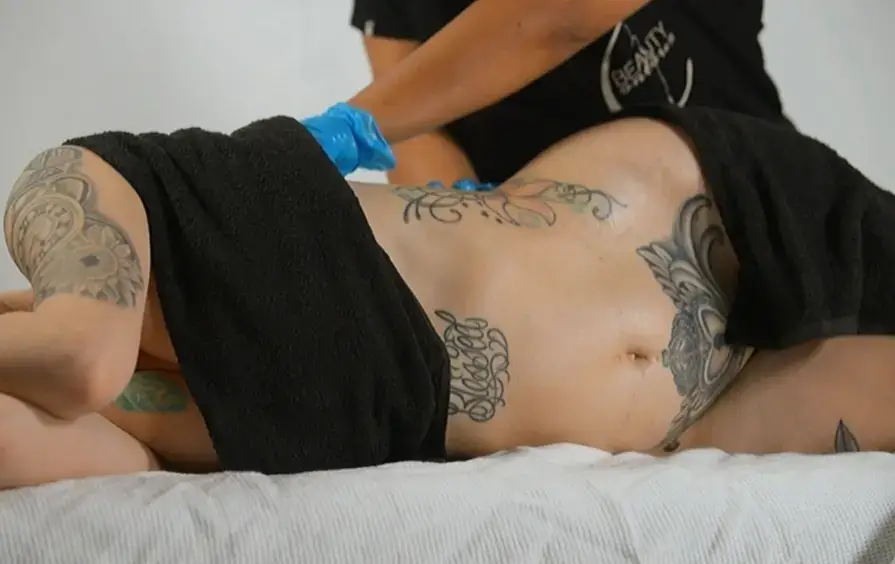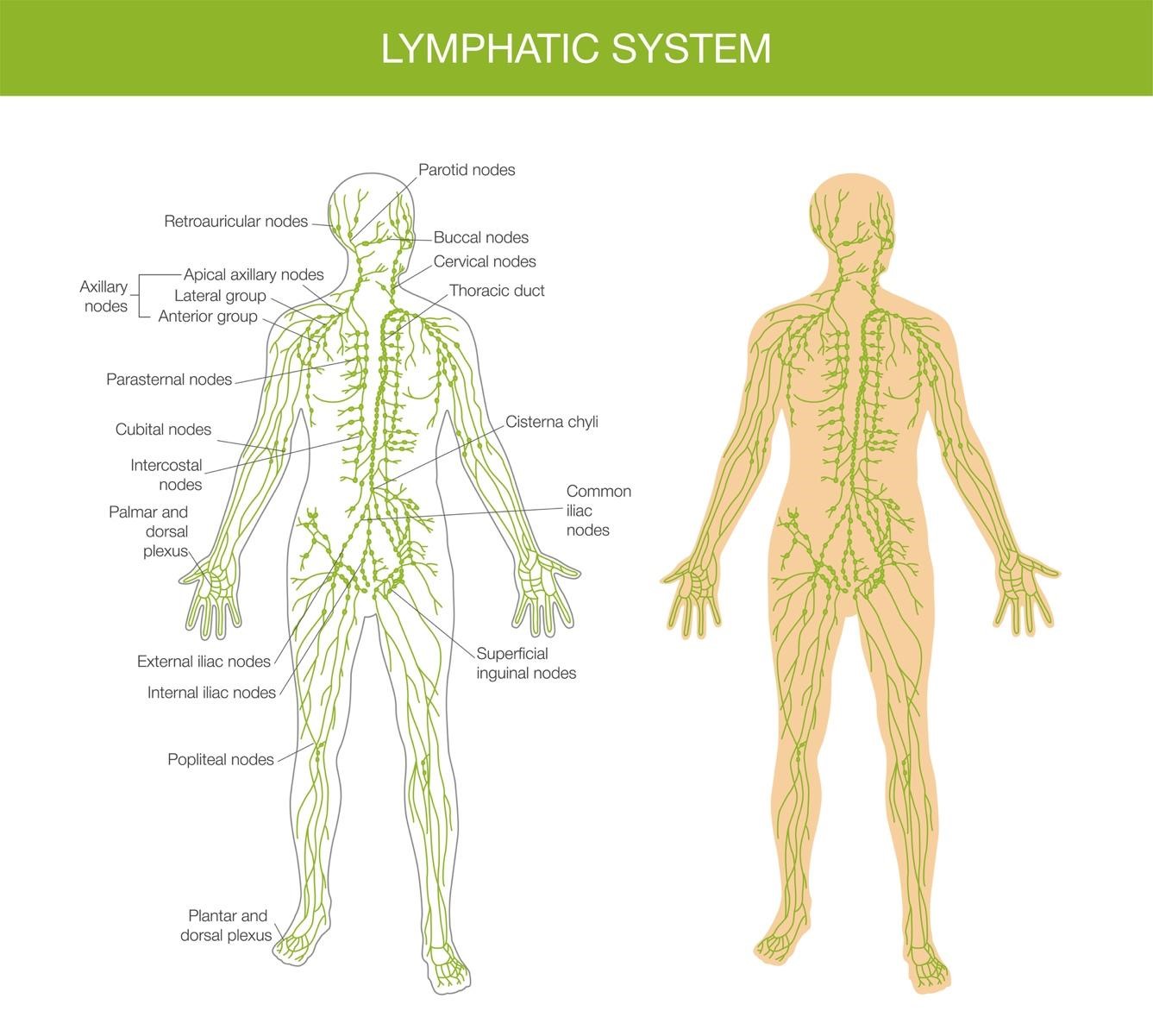BUY NOW PAY LATER
PLIM. 18+. T&Cs apply.

The lymphatic system is a part of the immune system. It also maintains fluid balance and plays an essential role in absorbing fats and fat-soluble nutrients. The lymphatic system combines lymph nodes and vessels that run along blood vessels. They have a fluid called “lymph”. When a cardiovascular system sends blood to tissues and organs, a tissue retains fluid in the form of lymph. Lymph comprises proteins, water, waste products, and immune system elements. Lymph nodes help filter all these impurities. This fluid should be screened to reduce edema or swelling in the body.

As blood in the circulatory system constantly moves, lymphatic fluid flows into the lymph vessels. The buildup of lymph in your body’s tissues causes swelling, and this is where lymphatic drainage massage comes to the rescue. Lymphatic drainage massage is a mild technique that helps the lymph nodes pass fluid efficiently. The lymphatic massage aims to improve lymph fluid flow, reducing swelling. When functioning correctly, they help fight infection and lymphedema.
Lymphatic drainage massage is a calming massage technique that consists of gentle strokes, ultimately leading to the adequate flow of lymphatic fluid. As a result, the lymphatic system works efficiently to reduce swelling and aids in fighting against infection-causing bacteria.
Purpose
Lymphatic massage aims to reduce swelling caused by lymph fluid buildup in body tissues. After filtering harmful bacteria, the remaining fluid is sent back to the bloodstream via lymph vessels. When lymph flows effectively in lymph nodes, it provides essential nutrients to the bloodstream. It helps to fight against infection-causing bacteria. It also helps cure lymphedema, post-surgical swelling, and sinus congestion.
Brief History and Origins
The history and origins of lymphatic drainage massage are marked by centuries of exploration, anatomical discoveries, and the pioneering work of individuals like Emil Vodder. Emil Vodder is considered the Father of Mannual Lymphatic Massage. This technique was developed by Emil Voddor and his wife, Estrid Vodder, in the 1930s and presented at a conference in Paris. By the time his studies started to draw the attention of the doctors who admired his work. They learn the connection between this massage technique and lymphoedema. In the late 1970s, the Vodder technique became more famous in North America. The skin and beauty industries also started to place more and more importance on it.
Techniques and manoeuvres used
Various specialist techniques and movements are used in lymphatic drainage massage to encourage fluid flow through the lymphatic system. Manual lymphatic drainage (MLD), a specialised massage therapy that promotes lymphatic circulation, frequently employs these techniques. It’s crucial to remember that these procedures should only be carried out by qualified healthcare providers or by skilled specialists. Here are a few typical moves:
It involves applying gentle, rhythmic circular motion with the help of the fingertips. Circulating motion works without gliding hands across the skin, resulting in adequate lymphatic flow.
This technique uses gentle movement with a combination of light pressure and release. It is applied to different areas of the body to stimulate lymphatic vessels and increase the performance of the lymphatic system.
This technique involves hands in a scoop-like motion. It involves gently lifting the skin and its tissues. This motion aids in increased lymphatic flow, which results in draining and reduced swelling.
This method uses circular or rotary motion with fingertips, hands, or palms to stimulate lymphatic flow. This technique requires repetitive and gentle rotation, allowing lymph movement to flow in a specific direction.
The lymphatic massage works with continuous spiral or shearing strokes and lessening pressure. The constant pressure-changing method triggered a pumping effect in the lymphatic vessels of the skin. Specifically, gentle and mild force is preferred to perform these massages. Too much pressure would compress the nodes, resulting in less lymph flow into the lymphatic structure.
The Lymphatic System is essential for the body’s immune defence of the human body. White blood cells trap and kill harmful bacteria as lymphatic fluids flow through lymph nodes. Lymphatic massage helps in the adequate flow and function of the lymph system. Some benefits of lymphatic drainage massage are:
Lymphatic massage is suitable for every entity unless you face severe health conditions. Following are some precautions to keep in mind before considering lymphatic massage:
It is essential to consult a qualified health professional or licensed massage therapist before indulging in therapy if you have the above health conditions. They will guide you on whether these messages are appropriate for you or if they need some adjustments to fulfil your requirements.
Before starting a session, you need to consult. Describe your desired results and be comfortable. During a session, relax and trust the process. After a successful session, provide feedback and follow the recommendation.
Along with the massage, some practices will boost the results and effectiveness of lymphatic massage. This practice involves the use of herbal teas. Nature is the great healer. Herbal teas are filled with calming and anti-inflammatory properties that help to boost the immune system. Following are some popular herbal teas:
A balanced diet and mild exercise also play a complementary role in lymphatic health. A nutrient-rich diet filled with minerals and vitamins helps to boost the lymphatic system and revitalise lymphatic health. Physical movements like yoga, pilates, deep breathing, and swimming improve blood circulation. They go hand in hand with hydration, as proper hydration ensures adequate lymph fluid. All this together leads to a healthy body.
Indeed, you can do lymphatic drainage massage at home. Let’s dive together to find the basic techniques you will apply by yourself:
Dry brushing involves the use of a natural bristle brush. Work your way up to the heart from your hands and feet using light and gentle pressure.
Deep breathing supports lymphatic circulation. Inhale deeply with your nose and exhale through your mouth. Doing deep breathing will instantly boost your mood. Deep breathing helps move the lymphatic through the thoracic duct.
Face massage is also a prevalent and effective practice. It includes gentle hand pressure on your face muscle and lymph nodes in your neck. It helps to improve skin texture and gives you a healthy glow.
Above are some techniques that you can easily follow. These techniques indeed give benefits, but they also have some limitations:
Self-massage does not directly target all areas of the body simultaneously.
Effective massage techniques require skill and practice.
Proper guidance makes it easier to use the wrong method or apply excessive pressure, potentially causing harm.
In conclusion, lymphatic massage helps reduce swelling, enhance the immune system, detoxify and cleanse, improve skin, fast post-surgery recovery, and improve circulation. A healthy body starts with a healthy lymphatic system. So, it is essential to remember the value and effectiveness of the lymphatic system. The better health of the lymphatic system is in your hands. It would help if you considered trying lymphatic massage following its benefits for your body. Incorporating this therapeutic technique into your routine is a wise choice. It cleanses and detoxifies your whole body and offers calmness and rejuvenation, vital for holistic well-being. Take a step towards better health and enjoy the endless benefits of lymphatic massage. Listen to your body! Your body will thank you for it.